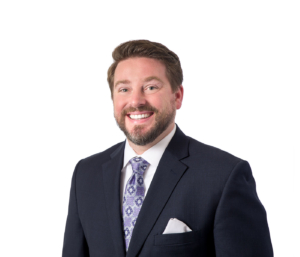 The #MeToo movement has exposed rampant sexual harassment across the country in a wide range of industries. Yet, we’ve heard little about the movement in our schools, until recently.
The #MeToo movement has exposed rampant sexual harassment across the country in a wide range of industries. Yet, we’ve heard little about the movement in our schools, until recently.
While often underreported, statistics of student-to-student sexual harassment are troubling. According to research from the American Association of University Women, approximately half of students in grades seven to 12 reported experiencing some form of sexual harassment in the 2010-2011 school year. Likewise, the United States Department of Education’s Office for Civil Rights recently reported a substantial increase in the number of sexual violence-related complaints that it received from the elementary and secondary education levels. These reports of student-to-student sexual harassment are rapidly transferring the focus of #MeToo from Tinsel Town to the classroom.
Indeed, school-based sexual harassment internet hashtags are on the rise. And that helps give students the opportunity to voice claims of sexual harassment and violence against teachers and staff as well as peers. For example, stories of student-to-student sexual harassment are proliferating at a feverish rate under the #MeTooK12 hashtag, which was developed by Stop Sexual Assault in Schools, a non-profit organization that focuses on schools’ gender discrimination responsibilities pursuant to Title IX of the Education Amendments Act of 1972. Other groups, such as Sexuality Information and Education Council of the United States, created the #teachthem hashtag. #Teachthem advocates comprehensive reform of sex education programs in schools, with a particular focus on teaching consent. As a consequence of these trends, school districts need to understand #MeToo and be acutely aware of the obligations the movement places on them under the law.
Although not exhaustive, schools should be on the look-out for the following legal and policy considerations related to #MeToo in their districts:
- How to respond to calls to change sex education programs, whether informally through parents, students, and/or community members and organizations or through formal government legislation, which focuses on teaching consent and healthy relationships
- Obligations of school districts to investigate, report and remedy student-to-student sexual harassment and violence as well as distinguish bullying from sexual harassment and violence under district sexual harassment policies
- Responsibilities under Title IX to address and remedy alleged violations of gender discrimination as well as allegations of sexual harassment and violence, whether student-to-student or staff-to-student
- Student First Amendment free speech rights that call attention to #MeToo or #MeTooK12 as well as balancing these protected rights against the districts’ need to maintain discipline and order in school.
Above all else, #MeToo presents complicated legal questions for schools. Districts are therefore encouraged to contact their attorneys immediately if #MeToo or related sexual harassment issues arise in (and possibly beyond) their classrooms. Finally, while the focus of this alert has been on student sexual harassment issues, schools should also be mindful of their obligations to protect staff members against sexual harassment.
James McWeeney is an attorney at Walter Haverfield who focuses his practice on education law. He can be reached at jmcweeney@walterhav.com or at 216-928-2959.